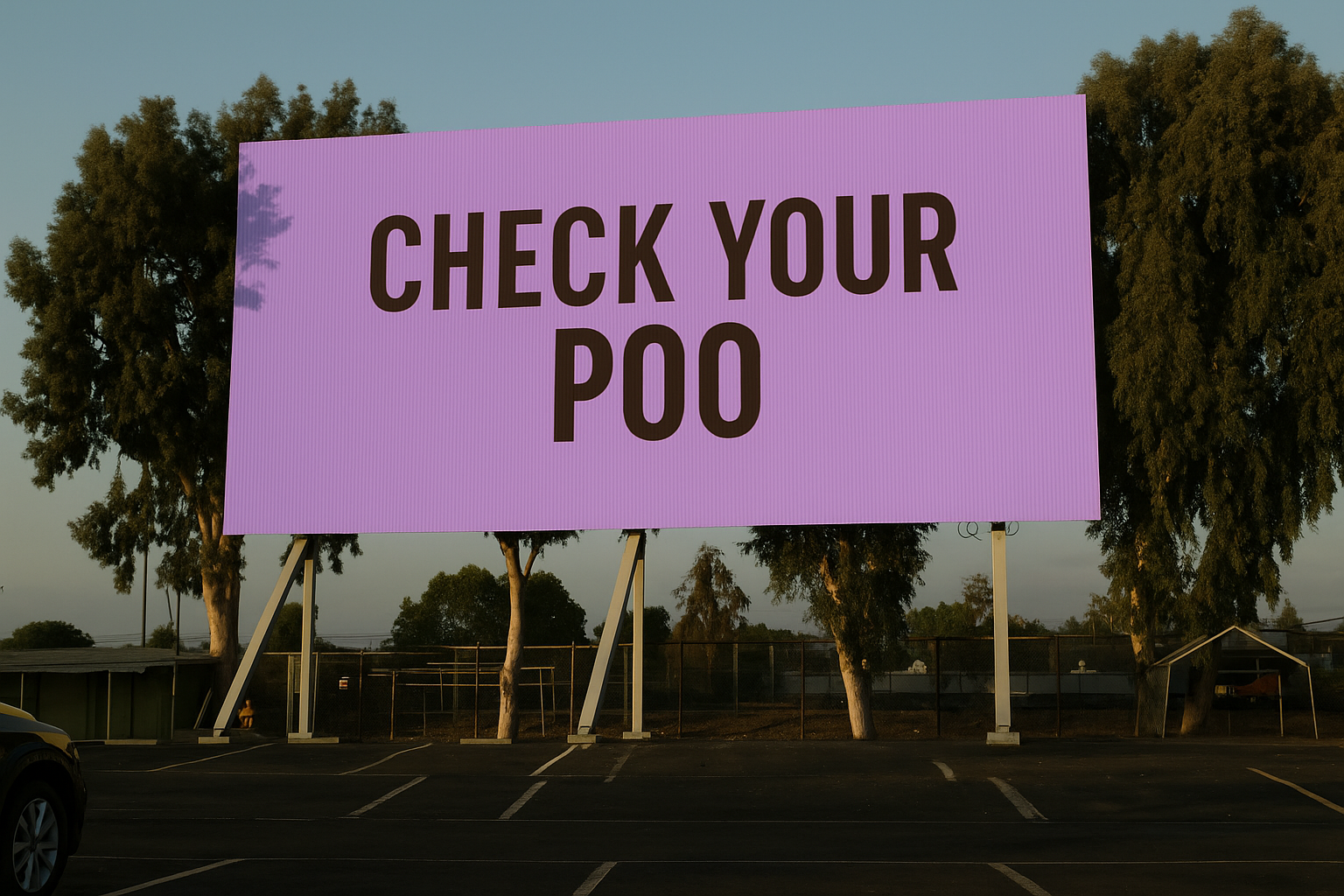
Know Your Poo
Because bowel health shouldn’t be a taboo

What to Check for When You Poo (According to a GP)
Dr Anisha Patel (MBchB, MRCP, DFSRH, DRCOG, MRCGP) Let’s be honest, most of us give more attention to what goes into our bodies than what comes out. But your poo...
WHAT YOUR POO IS TELLING YOU
Food is the reason we poo after all, so we figured why not reimagine the Bristol Stool Chart.

Type 1: Maltesers
Constipation
Solid, hard, pellet-like lumps that are tough to pass. Often a sign you’re lacking fibre, fluids, or your gut’s moving too slowly.
See a doctor if they last more than 3 weeks, are severe, or comes with pain, blood, or unexplained weight loss.

Type 2: Corn on the Cob
Considered Constipation
Lumpy, sausage-shaped stool that still feels hard and difficult to pass.
Common with dehydration, low fibre, or irregular routines.

Type 3: Baguette
Healthy Poo Zone
A sausage shape with cracks on the surface. Considered pretty normal and healthy, especially if it passes without drama.
Keep up your fibre, fluids, and daily movement.

Type 4: Smooth Sausage
Perfect Poo Zone
The gold standard poo. Smooth, soft, sausage-like (your gut’s happy place).
Stick with whatever you’re doing – your gut loves it.

Type 5: Chocolate Truffles
On the Softer Side
Soft blobs that are easy to pass. Can happen after a big meal, stress, or mild gut irritation.
See a doctor if this becomes your normal, or is paired with urgency, pain, or bleeding.

Type 6: Fluffy Eggs
Considered Diarrhoea
Mushy, fluffy pieces with ragged edges. Often a sign of gut irritation, infection, food sensitivity, or stress.
See a doctor if it’s ongoing, severe, or you’re dehydrated.

Type 7: Chocolate Spread
Definitely Diarrhoea
Entirely liquid, no solid pieces. Often from infection, food poisoning, or sudden gut upset.
See a doctor urgently if it persists more than a couple of days, contains blood, or you’re showing signs of dehydration.

Disclaimer
Please note:
This chart is for general guidance only and is not a substitute for medical advice. Always consult your doctor if you notice ongoing changes, experience pain, blood in your stool, unexplained weight loss, or anything unusual for you.

Type 1: Maltesers
Constipation
Solid, hard, pellet-like lumps that are tough to pass. Often a sign you’re lacking fibre, fluids, or your gut’s moving too slowly.
See a doctor if they last more than 3 weeks, are severe, or comes with pain, blood, or unexplained weight loss.

Type 2: Corn on the Cob
Considered Constipation
Lumpy, sausage-shaped stool that still feels hard and difficult to pass.
Common with dehydration, low fibre, or irregular routines.

Type 3: Baguette
Healthy Poo Zone
A sausage shape with cracks on the surface. Considered pretty normal and healthy, especially if it passes without drama.
Keep up your fibre, fluids, and daily movement.

Type 4: Smooth Sausage
Perfect Poo Zone
The gold standard poo. Smooth, soft, sausage-like (your gut’s happy place).
Stick with whatever you’re doing – your gut loves it.

Type 5: Chocolate Truffles
On the Softer Side
Soft blobs that are easy to pass. Can happen after a big meal, stress, or mild gut irritation.
See a doctor if this becomes your normal, or is paired with urgency, pain, or bleeding.

Type 6: Fluffy Eggs
Considered Diarrhoea
Mushy, fluffy pieces with ragged edges. Often a sign of gut irritation, infection, food sensitivity, or stress.
See a doctor if it’s ongoing, severe, or you’re dehydrated.

Type 7: Chocolate Spread
Definitely Diarrhoea
Entirely liquid, no solid pieces. Often from infection, food poisoning, or sudden gut upset.
See a doctor urgently if it persists more than a couple of days, contains blood, or you’re showing signs of dehydration.

Disclaimer
Please note:
This chart is for general guidance only and is not a substitute for medical advice. Always consult your doctor if you notice ongoing changes, experience pain, blood in your stool, unexplained weight loss, or anything unusual for you.

Type 1: Maltesers
Constipation
Solid, hard, pellet-like lumps that are tough to pass. Often a sign you’re lacking fibre, fluids, or your gut’s moving too slowly.
See a doctor if they last more than 3 weeks, are severe, or comes with pain, blood, or unexplained weight loss.

Type 2: Corn on the Cob
Considered Constipation
Lumpy, sausage-shaped stool that still feels hard and difficult to pass.
Common with dehydration, low fibre, or irregular routines.

Type 3: Baguette
Healthy Poo Zone
A sausage shape with cracks on the surface. Considered pretty normal and healthy, especially if it passes without drama.
Keep up your fibre, fluids, and daily movement.

Type 4: Smooth Sausage
Perfect Poo Zone
The gold standard poo. Smooth, soft, sausage-like (your gut’s happy place).
Stick with whatever you’re doing – your gut loves it.

Type 5: Chocolate Truffles
On the Softer Side
Soft blobs that are easy to pass. Can happen after a big meal, stress, or mild gut irritation.
See a doctor if this becomes your normal, or is paired with urgency, pain, or bleeding.

Type 6: Fluffy Eggs
Considered Diarrhoea
Mushy, fluffy pieces with ragged edges. Often a sign of gut irritation, infection, food sensitivity, or stress.
See a doctor if it’s ongoing, severe, or you’re dehydrated.

Type 7: Chocolate Spread
Definitely Diarrhoea
Entirely liquid, no solid pieces. Often from infection, food poisoning, or sudden gut upset.
See a doctor urgently if it persists more than a couple of days, contains blood, or you’re showing signs of dehydration.

Disclaimer
Please note:
This chart is for general guidance only and is not a substitute for medical advice. Always consult your doctor if you notice ongoing changes, experience pain, blood in your stool, unexplained weight loss, or anything unusual for you.

The Very Important Stuff
Just always remember...
If something doesn’t feel right, speak to your GP. Don’t be embarrassed – and don’t delay – they talk about poo all the time.
As Dame Deborah James said: 'Check your poo – it could save your life.'




